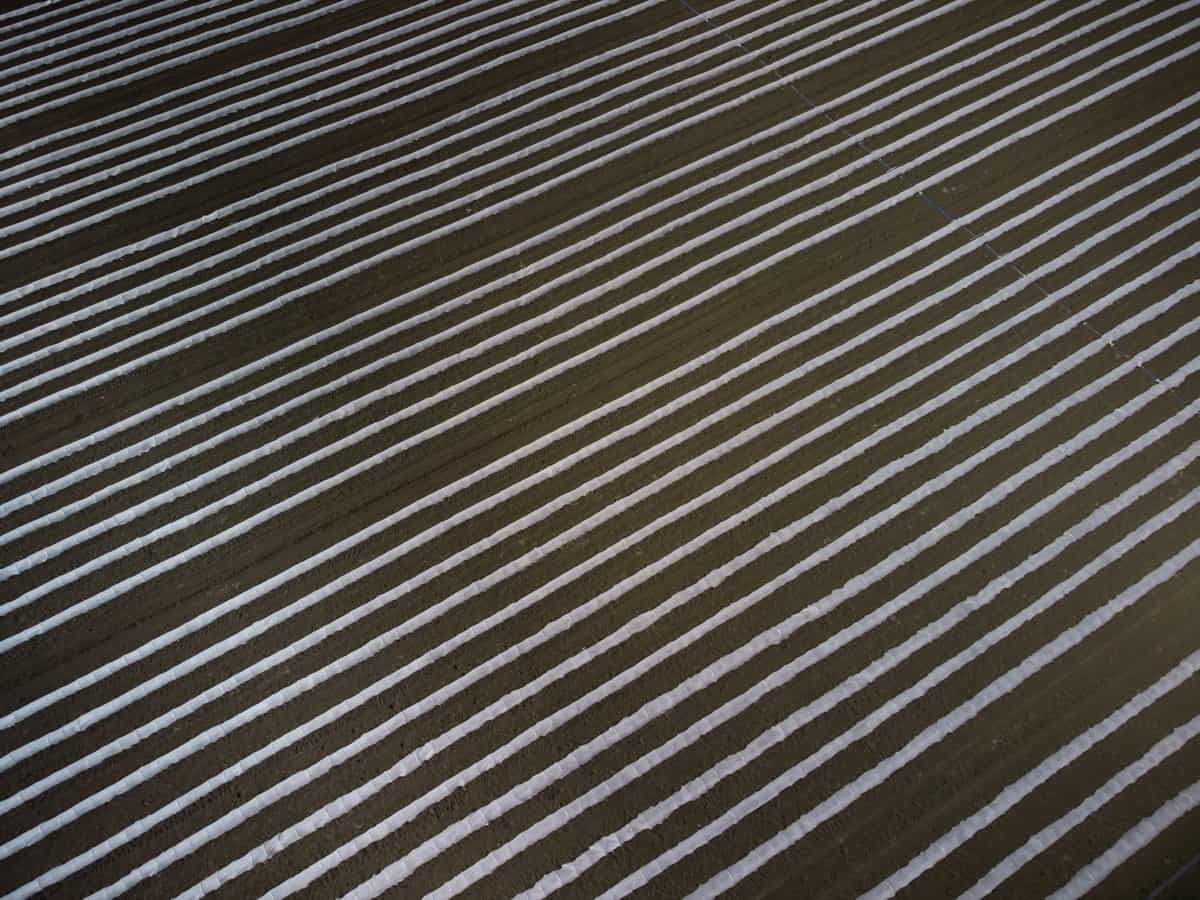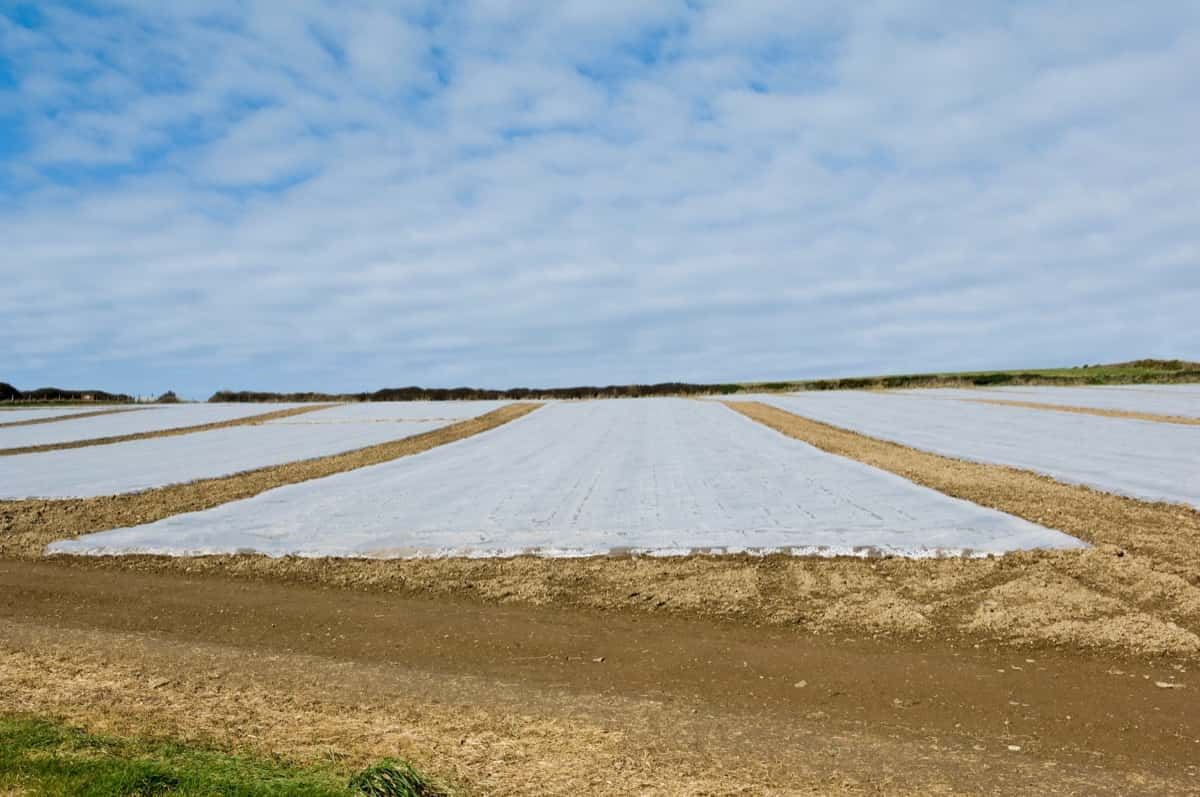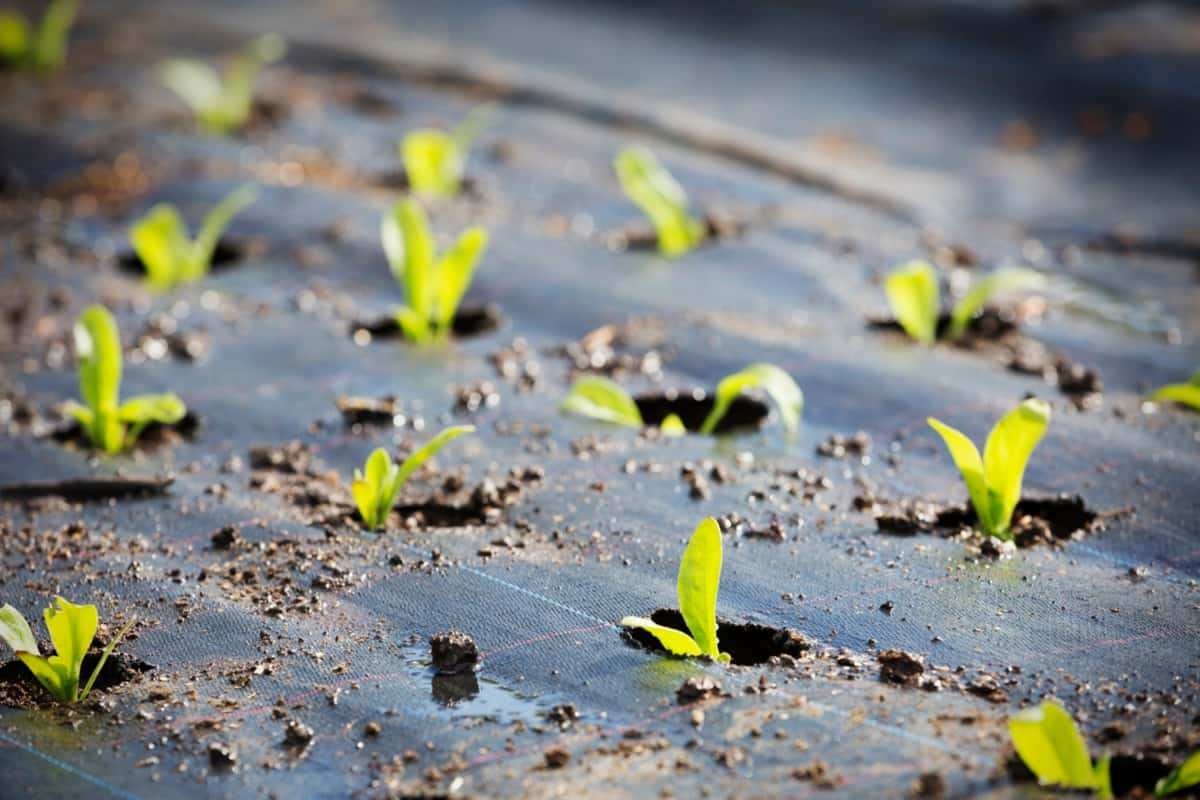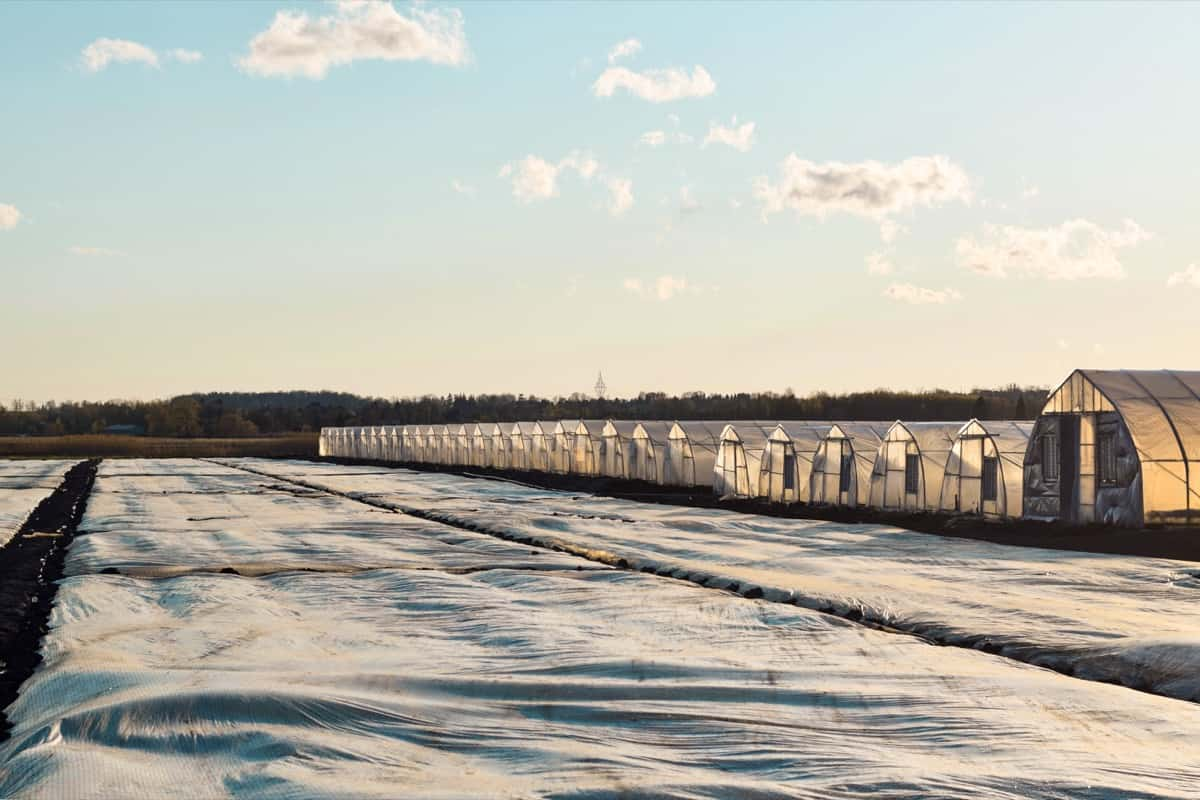Are you tired of battling stubborn weeds that threaten to overrun your vegetable garden or high-value crops? Look no further! Here introducing you to a game-changing technique called soil solarization. This revolutionary non-chemical method offers an effective and environmentally friendly solution for weed control.

Using solar power, soil solarization harnesses the natural energy to heat the soil to temperatures lethal to weed seeds, pests, and pathogens. The process involves covering moist soil with clear plastic sheets, which trap solar radiation, creating a greenhouse effect that eliminates unwanted plant growth. Say bye to harmful chemicals and hello to weed-free control. Get ready to unlock the secrets of soil solarization and enjoy healthier, more bountiful harvests.
Soil Solarization for Vegetables
What is Soil Solarization?
Soil solarization is a natural and eco-friendly method to manage soilborne pests. It involves covering the soil with transparent plastic during the hot season of the year, which heats the soil to temperatures that kill weeds, plant pathogens, and nematodes. Solarization is a safe and effective practice to control weeds and pests in your garden. It is a non-chemical method that does not release harmful environmental toxins.
Solarization can also improve soil health by increasing the availability of nutrients to plants and by suppressing plant diseases. Organic or inorganic mulch covers the soil. It has boosted crop yields for centuries. Mulches can boost soil moisture, infiltration, retention, weed control, soil temperature, soil erosion protection, soil tilth, soil nutrients, and pest and disease control.
Soil solarization is a method of soil disinfestation that involves covering moist soil with transparent polyethylene film during the hot summer months for 4-5 weeks. This effectively disinfects the soil of certain phytopathogenic fungi and weed seeds. It can also increase the yields of test crops.
What is Solarization Technology?
- Solarization technology is a remarkable method that utilizes the power of the sun to control weeds and improve the health of the soil naturally and effectively.
- When we talk about solarization, we refer to the thermal, chemical, and biological changes in soil when it is covered with clear plastic film and exposed to solar radiation.
- The process involves laying the plastic film close to the soil surface to minimize airspace and maximize heat absorption. Dark-colored soils tend to absorb more radiation, leading to higher temperatures. Moist soil enhances heat transfer and the sensitivity of soilborne organisms.
- The choice of plastic film is crucial, with clear transparent polyethylene being the most commonly used due to its affordability and strength. Thinner films are more efficient for soil heating. Irrigation before or during solarization further boosts the effectiveness of the process.
- By raising soil temperatures, solarization can eliminate various pests, pathogens, and weeds, making it an excellent tool for crop protection. The treatment duration of 4-6 weeks during the warm summer is typically sufficient to achieve significant results.
- Embracing solarization technology offers a safe, environmentally friendly, cost-effective solution for promoting healthy and thriving crops.
In case you missed it: Growing Vegetables and Fish Together in the Backyard: Starting a Backyard Aquaponics

How Soil Solarization Works
- Clear plastic film is placed over the soil.
- The edges of the plastic film are weighed down with rocks or bricks to prevent it from blowing away.
- The plastic sheet is left in place for 4-6 weeks or until the soil reaches a temperature of 115-120 degrees Fahrenheit.
- After 4-6 weeks, the plastic film is removed, and the soil can be planted.
Soil solarization can be used to control a variety of pests and diseases, including Weeds, Nematodes, Fungi, Bacteria, and Viruses. Soil solarization is a safe, effective, and sustainable method of controlling pests and diseases. It is a valuable tool for organic gardeners and farmers.
Benefits of Soil Solarization in Vegetables and High-Value Crops
- Effective weed control: Soil solarization provides a non-chemical method to combat stubborn weeds, eliminating the need for herbicides and reducing weed competition significantly.
- Pathogen and pest reduction: The high temperatures generated during solarization help eliminate plant pathogens, bacteria, nematodes, and certain mites, reducing the risk of crop diseases and improving yield potential.
- Enhanced soil health: Solarization promotes soil sterilization, effectively reducing soilborne diseases and pathogens that can hamper plant growth. It creates a clean slate for crops to flourish and reduces the need for synthetic fertilizers.
- Environmentally friendly: By avoiding chemical herbicides and pesticides, soil solarization minimizes environmental pollution, ensuring a healthier ecosystem and safer produce.
- Cost-effective: Compared to chemical weed control methods, soil solarization can be a more economical option, reducing the expenses associated with herbicides and promoting sustainable farming practices.
- Increased crop yield: With weeds and pests under control, crops can access vital resources like sunlight, water, and nutrients more efficiently, resulting in improved yields and quality produce.
Best Crops Suitable for Soil Solarization in Vegetables and High-Value Crops
Soil solarization can be used to control weeds and pests in a variety of vegetables and high-value crops. Some of the best crops for soil solarization are:
| Tomatoes | Onions |
| Peppers | Garlic |
| Cucumbers | Lettuce |
| Melons | Spinach |
| Squash | Strawberries |
| Beans |
In case you missed it: How to Get Rid of Fruit Fly in Vegetables: Symptoms, Treatment, Management, Chemical, and Organic Control

How to Use Soil Solarization For Vegetable Crops
- Prepare the soil: Start by clearing the vegetable bed of debris, rocks, or weeds. Level the soil surface to ensure even coverage.
- Irrigate the soil: Thoroughly water it to ensure it is moist but not waterlogged. This will enhance the effectiveness of solarization.
- Cover the soil: Lay clear plastic sheets directly over the moist soil, ensuring a tight seal around the edges. Use weights or bury the edges to secure the plastic and minimize airflow.
- Allow solarization: Leave the plastic in place for at least 4-6 weeks during the warmest period, typically in summer. This duration allows the sun’s heat to penetrate the soil and eliminate pests, pathogens, and weed seeds.
- Monitor progress: Periodically check the temperature under the plastic using a soil thermometer. It should reach temperatures between 120-140°F (49-60°C) for effective results.
- Remove the plastic: After the recommended duration, carefully remove the plastic. Dispose of any remaining weeds or debris.
- Planting: Wait for the soil to cool down before planting your vegetable crops. Take advantage of the weed-free environment to start with healthy, disease-free seedlings.
How to Use Soil Solarization For High-value Crops
First, prepare the soil by removing weeds and debris. Moisten the soil to ensure good heat transfer. Cover the area with a transparent plastic film, securing the edges with soil. Leave it in place for 4-6 weeks during the hot summer. The sun’s energy trapped by plastic raises soil temperatures, killing weeds, pests, and disease-causing organisms. This process also enhances nutrient availability. After solarization, remove the plastic and incorporate organic matter into the soil. You have a clean, nutrient-rich plot ready for successful high-value crop cultivation.
Soil Solarization Modes of Action in Weed Control in Vegetables and High-Value Crops
Soil solarization uses solar energy to control plant pathogens and pests in the soil. It involves covering moist soil with transparent plastic sheets to trap solar radiation and heat it to high temperatures. One of the critical modes of action is the hydrothermal effect. Heating moist soil enhances solarization by increasing its effectiveness in soil disinfestation. At temperatures above 50°C, the survival of microorganisms is limited to a few hours, and at temperatures of 37-50°C, significant population reductions occur within 2-5 weeks.
The heating component of solarization plays a crucial role in achieving these temperature ranges and effectively reducing soil microflora and nematodes. In addition to direct thermal death, sub-lethal heating during solarization can have other effects on soil organisms. It can result in delayed propagule germination, reduced growth rates, increased sensitivity to soil fumigants, and possibly induce biological control of phytopathogenic fungi. The sub-lethal heating may also inhibit nematode reproduction or egg hatching, leading to delayed control of nematodes.
Soil solarization can also affect soil properties and mineral nutrients. Plastic-mulched and solarized soils have been found to contain higher levels of soluble mineral nutrients compared to untreated soils. The treatment releases soluble mineral nutrients from organic material and heat-killed soil biota, increasing ammonium-nitrogen, nitrate-nitrogen, calcium, magnesium, and electrical conductivity. These increases in soluble mineral nutrients provide an additional economic benefit to the soil treatment.
In case you missed it: Drip Fertigation in Vegetable Crops: A Practical Guide for Farmers

The effects of solarization on soil biota are more selective than other soil disinfestation methods. Thermotolerant fungi and actinomycetes are affected to a lesser degree than phytopathogenic and total fungi, allowing them to recolonize the solarized soil with higher populations. Certain beneficial microorganisms, such as fluorescent pseudomonads and mycorrhizal fungi, may be reduced initially but can recolonize treated soil.
Solarization can also favor the colonization of saprophytic microorganisms that can inactivate surviving phytopathogens. The control of soilborne pathogens and pests through solarization has been observed for various organisms, including Verticillium and Fusarium wilts, Phytophthora spp., Pythium spp., Rhizoctonia solani, Meloidogyne spp., and several other nematode genera.
However, the success of soil solarization may vary depending on the heat tolerance of the specific pathogen or pest and environmental conditions. Weed control is another visible result of solarization. Winter weeds are generally more susceptible to solarization, while summer weeds may be more resistant. The elimination of weeds can prevent the build-up of pathogens or pests on susceptible weed species between crops.
How to Use Soil Solarization for Disease and Pest Management
Disease Control
- Soil solarization kills various plant-infecting fungi and bacteria.
- Pathogens such as Verticillium dahliae, Phytophthora cinnamomi, and Rhizoctonia can be controlled.
- However, some diseases like stem and root rots caused by Macrophomina and Pythium are resistant.
Pest Management
- Soil solarization effectively controls many annual weeds by heating the soil.
- It works best on the surface layer, targeting weeds like Ageratum, Amaranthus, and Portulaca.
- Perennial weeds such as kudzu and bermudagrass can also be eliminated, although they may require multiple treatments.
Weed and Disease Relationship
- Solarization reduces diseases and pests associated with nearby wild plants.
- By eliminating weeds, the overall presence of diseases and pests is reduced.
Maximizing Effectiveness
- Water the area before solarization and allow weeds to grow before incorporating them into the ground.
- Monitoring weed growth under plastic is crucial to ensure the process works effectively.
Considerations
- Soil solarization aligns with permaculture and organic farming principles.
- Plastic use may be a concern for some permaculturists.
- The method is more beneficial for growing annuals than perennials.
Impact on Earthworms and Nematodes
- Earthworms tend to burrow underground to avoid excessive heat during solarization.
- Nematodes, including root-knot nematodes, can be eliminated with solarization, but some may survive deeper in the ground.
In case you missed it: How to Start Organic Farming in Nigeria: Crops, Organic Vegetable Cultivation, Setup Cost, and Challenges

Enhancing Pest Management
Combining solarization with the use of chicken manure can improve nematode control.
Impact on Beneficial Microorganisms
- Soil solarization may kill beneficial bacteria, but they can quickly recover or resist the treatment.
- Adding organic matter after solarization helps restore the balance of microorganisms in the soil.
How to Use Soil Solarization for Weed Management
Preparation
- Clear the area of existing weeds and debris.
- Moisten the soil to enhance heat transfer.
Plastic Covering
- Cover the prepared area with a transparent plastic sheet.
- Secure the edges of the plastic by burying them in the soil.
Sun Exposure
- Leave the plastic sheet in place for 4-6 weeks during the hot summer.
- The sun’s energy trapped by plastic raises soil temperatures.
Weed Control
- Soil solarization effectively controls many types of weeds.
- The high soil temperatures inhibit weed seed germination and growth.
Annual Weed Management
- Solarization can prevent the emergence of annual weeds.
- Heating the soil to around 37°C (99°F) for 2-4 weeks works best on the surface layer.
Perennial Weed Management
- Tough perennial weeds can also be targeted with soil solarization.
- Weeds like kudzu, bermudagrass, and bindweed can be eliminated from eco-sensitive areas.
Duration and Persistence
- Solarizing soil to kill weeds takes longer than dealing with annuals.
- Multiple treatment campaigns may be necessary to permanently eradicate perennials.
Weed Impact Reduction
- Solarization reduces the number of diseases and pests associated with nearby wild plants.
- By eliminating weeds, the overall presence of diseases and pests is minimized.
Incorporating Organic Matter
- After solarization, incorporate organic matter into the soil.
- This helps improve soil fertility and structure for future crop cultivation.
Eco-friendly Alternative
- Soil solarization is a natural and chemical-free method for weed management.
- It reduces reliance on harmful herbicides while promoting sustainable farming practices.
Limitations of Soil Solarization
- Lengthy treatment time: Soil solarization can take several weeks to be effective. This is because the soil needs to reach a high temperature to kill pests and diseases.
- Dependence on climatic energy: Soil solarization relies on the sun’s heat to work. This means that it cannot be used in areas with cold climates or during the winter months.
- Post-treatment contamination from plastic residues: Soil solarization uses plastic to cover the soil. This plastic can sometimes break down and release harmful chemicals into the soil.
- Ineffectiveness against some pests and diseases: Soil solarization is ineffective against all pests and diseases. Some pests and diseases can survive the heat of soil polarization.
In case you missed it: How This Farmer Earning 18 Lakhs from His Bottle Gourd Farm – A Vegetable Farmer Success Story

Conclusion
Soil solarization offers a non-chemical and environmentally friendly approach to weed control in vegetables and high-value crops. Utilizing solar energy to heat and sterilize the soil effectively suppresses weed growth, reduces herbicide reliance, and promotes healthy plant growth.
- Goat Farming Technology: The Future of Goat Husbandry
- How to Build a Low-budget Goat Shed: Cheap Ideas and Tips
- Goat Farming Training Programs in India: A Beginner’s Guide
- Types of Pesticides Used in Agriculture: A Beginner’s Guide
- Economical Aquaculture: A Guide to Low-Budget Fish Farming
- 15 Common Planting Errors That Can Doom Your Fruit Trees
- How to Make Houseplants Bushy: Effective Tips and Ideas
- Innovative Strategies for Boosting Coconut Pollination and Yield
- Pollination Strategies for Maximum Pumpkin Yield
- The Complete Guide to Chicken Fattening: Strategies for Maximum Growth
- Natural Solutions for Tulip Problems: 100% Effective Remedies for Leaf and Bulb-Related Issues
- Revolutionizing Citrus Preservation: Towards a Healthier, Greener Future
- Natural Solutions for Peony Leaf and Flower Problems: 100% Effective Remedies
- Maximizing Profits with Avocado Contract Farming in India: A Comprehensive Guide
- Natural Solutions for Hydrangea Problems: 100% Effective Remedies for Leaf and Flowers
- The Ultimate Guide to Choosing the Perfect Foliage Friend: Bringing Life Indoors
- From Sunlight to Sustainability: 15 Ways to Use Solar Technology in Agriculture
- The Ultimate Guide to Dong Tao Chicken: Exploring from History to Raising
- The Eco-Friendly Makeover: How to Convert Your Unused Swimming Pool into a Fish Pond
- Mastering the Art of Delaware Chicken Farming: Essentials for Healthy Backyard Flocks
- 20 Best Homemade Fertilizers for Money Plant: DIY Recipes and Application Methods
- How to Craft a Comprehensive Free-Range Chicken Farming Business Plan
- Brighten Your Flock: Raising Easter Egger Chickens for Beauty and Bounty
- How to Optimize Your Poultry Egg Farm Business Plan with These Strategies
- Subsidy for Spirulina Cultivation: How Indian Government Schemes Encouraging Spirulina Farmers
- Ultimate Guide to Raising Dominique Chickens: Breeding, Feeding, Egg-Production, and Care
- Mastering the Art of Raising Jersey Giant Chickens: Care, Feeding, and More
- Ultimate Guide to Raising Legbar Chickens: Breeding, Farming Practices, Diet, Egg-Production
- How to Raise Welsummer Chickens: A Comprehensive Guide for Beginners
- How to Protect Indoor Plants in Winter: A Comprehensive Guide
- Ultimate Guide to Grow Bag Gardening: Tips, Tricks, and Planting Ideas for Urban Gardeners
- Guide to Lotus Cultivation: How to Propagate, Plant, Grow, Care, Cost, and Profit
- Agriculture Drone Subsidy Scheme: Government Kisan Subsidy, License, and How to Apply Online
- Ultimate Guide to Raising Araucana Chickens: Breed Profile, Farming Economics, Diet, and Care
- Bringing Hydroponics to Classroom: Importance, Benefits of Learning for School Students
- Ultimate Guide to Raising Polish Chickens: Breed Profile, Farming Economics, Diet, and Care
It is a very useful blog and very important information about Mulch.